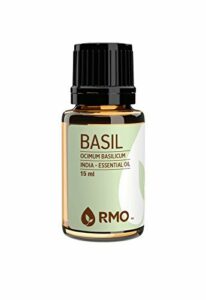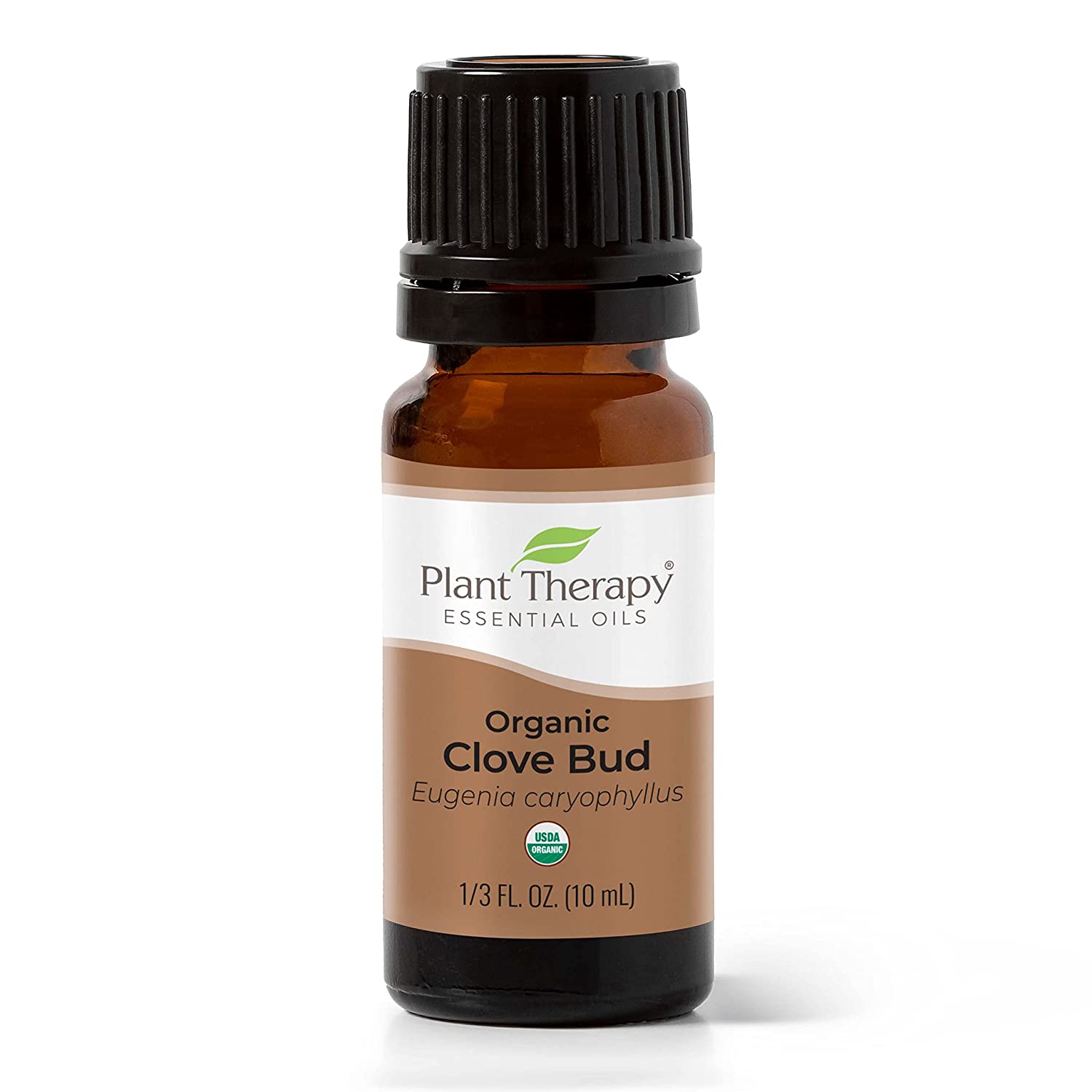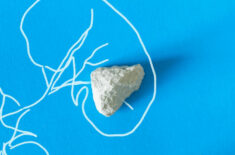Overview
There are different types of ear infections:
- Middle ear infection (aka acute otitis media)
- Swimmer’s ear (Outer ear canal infection)
- Labyrinthitis (An inflamed inner ear and the nerves that connect it to the brain)
A common cause of earaches is hardened ear wax build-up.
People often use over-the-counter ear drops to help loosen and soften the wax.
Ear infections can occur due to an overgrowth of bacteria or a virus.
If you or your little one are experiencing ear discomfort, essential oils might be one of the many useful home remedies you can try.
Please note that a persistent earache that doesn’t resolve could indicate an infection (otitis) or a perforated eardrum.
Always consult with your healthcare provider before using essential oils in the ear area.
Essential Oils As A Natural Remedy For Ear Pain & Ear Infections
Essential oils (EOs) are highly concentrated plant extracts sourced from different parts of trees, plants, flowers, and even fruit.
They contain high amounts of many active healing compounds that are known to be an effective treatment for many different types of infections.
The therapeutic application of EOs is also known as aromatherapy, which is considered complementary and alternative medicine (CAM).
For those seeking more natural healing options, it’s becoming increasingly common to treat many different ailments and conditions with EOs are the first line of response.
Preliminary research shows EOs can be capable of:
- Soothing eczema and other skin conditions
- Treating colds, coughs, sinus infections, and sore throats
- Addressing allergy symptoms
- Soothing headaches and migraines
- Supporting weight loss
- Treating warts
- Healing bug bites
- Treating hemorrhoids
- Soothing arthritis symptoms
- Helping sunburns and skin burns
- Providing constipation relief
- Improving mood and mental health
- Decreasing stress and anxiety
- Improving sleep
Certain EOs possess potent properties that can be beneficial when treating ear infections and discomfort:
- Immune system support
- Antibacterial
- Antiviral
- Antifungal
- Antiseptic
- Anti-inflammatory
- Pain-relief
The Best Essential Oils for Earaches & Ear Infections
Tea Tree Oil (Melaleuca alternifolia)




This powerful oil has been used medicinally by Australia’s Aboriginal people for thousands of years.
Its antiseptic and anti-inflammatory properties make it effective at treating wounds and accelerating healing.
As an antiviral, low concentrations of tea tree oil can inhibit herpes simplex virus (HSV), as seen in cultured cells. (1)
Studies also indicate it has a protective effect against influenza virus. (2)
As an antibacterial, it’s proven effective against E.coli, Staph infections, Klebsiella, Prevotella, Streptococcus, and many other pathogens. (3)
As an antifungal, tea tree may help treat Candida infections by breaking down fungal cells’ membranes. (4)
Oregano Oil (Origanum vulgare)

Multiple studies show that the active compounds in oregano – carvacrol and thymol – make the oil be one of nature’s most potent antibiotics.
These studies confirm oregano oil’s antibacterial properties enhance the healing process in bacterial infections including antibiotic-resistant bacteria such as E.coli. (5)
A 2014 study published in the Journal of Applied Microbiology found oregano oil to possess potent antiviral properties against murine norovirus after an hour of exposure. (6)
Basil Oil (Ocimum basilicum)


Basil oil is a well-known anti-inflammatory, antibacterial, antifungal, and healing accelerator because it’s high eugenol, linalool, thymol, and carvacrol.
A comparative animal study published in the Journal of Infectious Diseases found that placing basil oil in the ear canal provided effective treatment of acute otitis media (middle ear infection). (7)
The study found that the EO treatment healed 56-81% of infected rats compared to the placebo group.
Clove Oil (Eugenia caryophyllata)
Clove oil is a stealth killer of parasites, viruses, fungi, and bacteria.
It can combat E.coli, staph infections, and Candida albicans too. (8)
Clove oil has also been shown to increase total leukocyte (white blood cell) count while also restoring antibody immunity in mice whose immune system was compromised. (9)
In a study published on BMC Complementary & Alternative Medicine, an EO blend containing clove was found to protect against the influenza virus by reducing the number of infected cells by 90%. (10)
Other EOs that can help with earaches and ear infections:
- Lavender essential oil
- Frankincense oil
- Geranium
- Garlic oil
- Peppermint oil
Safety Concerns
When used safely and adequately, EOs usually offer little to no side effects.
When used topically as a natural aid for ear issues, EOs must always be diluted in a carrier oil to prevent skin irritation and reactions.
It’s advisable to perform a patch test on a non-affected area of the skin and wait 24 hours to confirm that there is no allergic reaction.
If you experience any adverse reaction to any oil, discontinue use immediately and consult your healthcare provider to seek medical advice.
Be aware of the contraindications for each oil you use as some EOs aren’t suitable for children or pregnant or nursing women.
Always choose high-quality, certified organic and therapeutic grade products to avoid diluted batches and the addition of potentially harmful chemicals.
How To Use EOs for Ear Care
As mentioned, always dilute the EOs with a carrier oil like olive oil or coconut oil.
You can use the following methods for ear problems, but be sure to consult with your doctor.
- Cotton ball – soak a cotton ball with a diluted EO blend (such as the DIY recipe shared below) and gently place the cotton ball in your ear. Don’t push it in or use force as this can make your infection and discomfort worse.
- Dropper – Fill a sanitized dropper with one of the solutions shared below and tilt your head to the side and slowly place a few drops into the affected ear. Allow the solution to soak into the ear by keeping your head tilted for 1-3 minutes then allow the solution to drip out.
- Warm Compress – Use warm water to dilute the EOs and soak a small towel in the solution. Squeeze most of the liquid out and place the towel on top of the affected ear.
Using a diffuser for ear pain is not as effective as the methods listed above.
A Healing DIY Essential Oil Blend for Ear Discomfort & Infections
This at-home essential oil recipe may help soothe ear discomfort so try it out:
- One drop tea tree oil
- One drop oregano oil
- One drop basil oil
- 2 drops lavender oil
- Two teaspoons of carrier oil
Mix all EOs together and then mix with your carrier oil of choice.
You can gently massage the outer parts of your affected ear, including the neck and side of the face.
You can also use just the oils with warm water to create a warm compress.
Or you can soak a cotton ball and gently place it in the outermost part of the ear.
Please consult your doctor or pediatrician before using essential oils on young children, especially if they are younger than three years old.
REFERENCES:
(1) https://www.ncbi.nlm.nih.gov/pubmed/11338678
(2) https://www.ncbi.nlm.nih.gov/pubmed/21095205
(3) https://www.ncbi.nlm.nih.gov/pmc/articles/PMC1360273/
(4) https://www.ncbi.nlm.nih.gov/pubmed/15140856
(5) https://www.ncbi.nlm.nih.gov/pubmed/23484421
(6) https://www.ncbi.nlm.nih.gov/pubmed/24779581
(7) https://pubmed.ncbi.nlm.nih.gov/15871121/
(8) https://www.ncbi.nlm.nih.gov/pubmed/17900043
(9) https://www.ncbi.nlm.nih.gov/pubmed/19589240
(10) https://www.ncbi.nlm.nih.gov/pubmed/17900043












